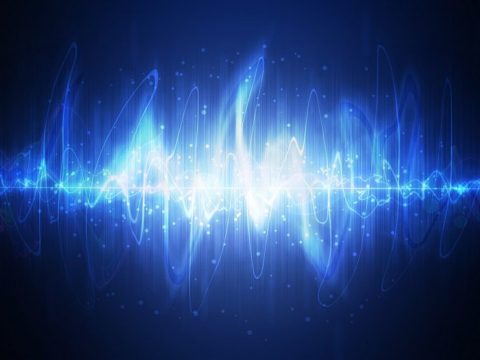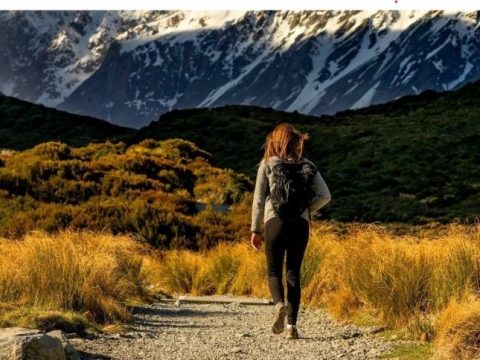
The Universal Laws: Karma
28 January, 2020
Am I a Toxic Person?
19 February, 2020Meditation
The frenetic world in which we live has made man forget himself. That is why he seeks outside what can only be found inside, peace, happiness, balance. And meditation is the science that can lead him to find that harmony.
The inner emptiness
Meditation is the key to find Peace, Harmony, Balance. But these words, even if they have not yet been completely forgotten, seem to have lost their meaning in today’s society. However, stress, depression, anxiety, and frustration are great realities of the chaotic day-to-day of our lives. And all those words are symptoms of the same disease: Inner Emptiness.

Dear reader, take a moment to look inside yourself and respond honestly: have you ever felt an emptiness inside?
Time passes quickly and we are always frenetically looking to anesthetize ourselves with one or another temporary emotion. Those are the emotions that a new car, a promotion at work, a trip, a favourite programme, etc. bring. But, after all that, the same empty feeling always comes back… Why?
This happens because man forgot himself, so deeply, that he ended up looking outside for what he can only find within. That’s why it seems that genuine Happiness has escaped us.
Meditation as a key to happiness
Knowing ourselves, exploring ourselves, rediscovering ourselves and reconnecting with ourselves, are keys to deal with these everyday illnesses. And the remedy for this is called Meditation, whose very meaning is “to look towards the centre”, “to look inside ourselves.”
Although the word Meditation immediately makes us think of the East, there are historical facts that help to prove that meditation is as old as humanity and that it was know and practiced in several cultures, for example: the Mayan, Aztec, Inca, Egyptian, Hebrew cultures among others. In India it is ‘Dhyana’, whose intense practice leads to Shamadi (ecstasy). In China it is known as Ch’an, and in Japan, Zen.
A State of Consciousness
More than a technique, as many might think, Meditation is a “state” of consciousness. It implies a mental “state” that is passive, open and receptive and an active consciousness.
To comprehend this we must observe our mind. In this way we will perceive that we are continually thinking, whether about the past (memories) or the future (desires, expectations). In this respect, the aim of the Meditation is to exhaust the process of thought, to reach a state of “not thinking”. Then, by keeping your attention fixed on a point (concentration) we will achieve a very special mental silence, with which we can experience the present moment.
“If you are eating, eat. If you are getting dressed, get dressed; if you are walking down the street, walk, walk, walk; but don’t think about anything else, just do what you’re doing, don’t escape from what you’re doing, don’t escape from the facts, don’t fill them with so many meanings, symbols, sermons and warnings. Live them without allegories; live them with a receptive mind from instant to instant.” Samael Aun Weor; “Revolution of the Dialectic”
The practice of Meditation
Meditation is a “state” of consciousness. That is why the continuous state of “now” is its objective. And there are countless techniques to achieve that state: some combined with movement, as in Yoga or Tai Chi Chu’an; others are practiced in a state of rest. Techniques with mantrams, prayers or music are also used. And others only use the biological functions as a focus of concentration, such as the breathing or the beating of the heart, for example. However, they all have points in common, steps that we must follow to reach our goal.
The steps are: relaxation, quiet mind, concentration, meditation, ecstasy. In India they are called: asana, pratyra, dharana, dhyana and shamadi, respectively.
“It is necessary to place the body in the most comfortable position (Asana); it is essential to put the mind in a blank state before concentration (Pratyara); it is urgent to know how to fix the mind on one thing (Dharana); in this way we arrive at ecstasy (Shamadi). This esoteric discipline of the mind must completely impregnate our daily life.” Samael Aun Weor
Meditation and physical well-being

The potential benefits of meditation are many. Today, it is widely used in the area of health, with the objective of helping patients to improve their mood, and treat states of anxiety and depression. It is also used to strengthen the immunological functions, to regulate blood pressure, to decrease epileptic seizures, to improve the ability to tolerate chronic pain, reducing medication consumption, among other benefits. (Data from the North American Center for Complementary and Alternative Medicine – NCCAM, 2006).
As a consequence of these discoveries the practice of Meditation attracted the interest of scientists at this time. Mainly because of the advances in medicine, which provide a better understanding of the neurobiological mechanisms involved (Kozasa, 2007).
In addition, with the advance of technology, neural imaging techniques have allowed scientists to clearly visualize what, how and how intensely the brain changes during a state of meditation, which lead to alterations in the entire body (Angelotti, 2007). This shows that meditation, though it is a simple technique , is strong enough to trigger alterations in the neurological activity.
On the other hand, some research shows that meditation acts on the autonomic nervous system, leading to a state of deep relaxation; reducing levels of the hormone cortisol, promoting physical and mental well-being (Deshmukh, 2006); (Pace, 2009).
Meditation in the field of Science and Mysticism
With the growing popularity of meditation in the hospital environment, due to its medical and psychological benefits, and because of the excellent results obtained in the patients, today there is significant and growing interest in applying it in a secular way, in other sectors too. For example, in schools, to maximize the leaning potential of students, enhancing individual skills and improving social relations among students, whether they are children, adolescents or adults. In addition, some studies show that, after meditating, there is a considerable increase in the levels of learning and, subsequently, of the students’ scores, in the educational context.
(Greenberg and Harris, 2011).
However, despite being a science, meditation also has its mystical and religious aspect, because it contacts the Human Being with his deep reality, it reconnects us with an eternal part of ourselves. That part that has always been and will always be, which is none other than God, who was always there, but was forgotten, hidden by the veil of our unbalanced thoughts and emotions. That is why mystics of all religions have practiced meditation, and that deep ecstasy is Gnosis itself, or the direct knowledge of Divinity within ourselves.
As we have seen, the benefits are infinite, and so this is the time to know ourselves, to rediscover ourselves, to reconnect with our deepest reality, as a universal panacea to rebalance ourselves and fill that perpetual emptiness with a rich inner life, which will bring with it joy, harmony and peace.
Learn more about these topics in our online self-knowledge courses.




